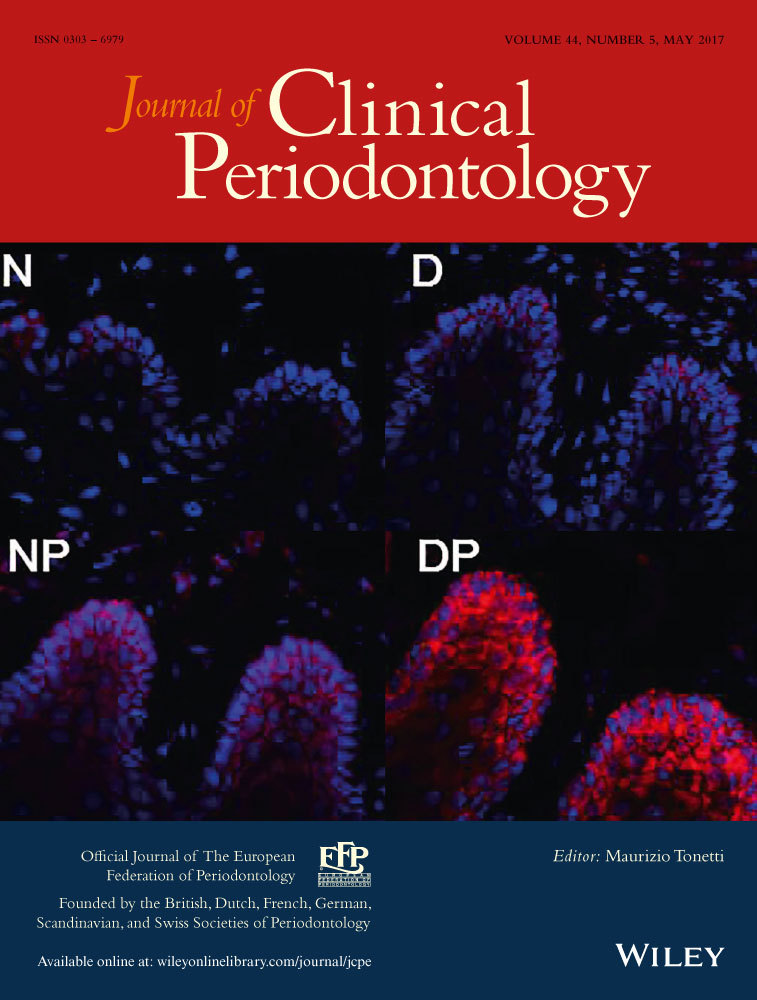Chemokine in inflamed periodontal tissues activates healthy periodontal-ligament stem cell migration
Conflict of interest and source of funding statement
Prof. Kim has a patent pending on the method of isolation stem cell using transwell and chemokine, and the other authors have stated explicitly that there are no conflicts of interest in connection with this article.
This research was supported by grants from the National Research Foundation of Korea (NRF) funded by the Korean government (MSIP; No. 2015R1A2A1A15053961) and the Ministry of Science, ICT & Future Planning (No. 2012M3A9B2052521).
Abstract
Aim
The present study aimed to characterize the expression pattern of chemokines obtained from inflamed periodontal defects and to determine the characteristics of human periodontal-ligament stem cells (hPDLSCs) migrated by each specific chemokine.
Materials and Methods
Both inflamed and healthy periodontal tissues were obtained from periodontitis patients (n = 11), and the chemokine expression levels were analyzed. The periodontal-tissue-specific chemokines were applied to healthy hPDLSCs from extracted teeth (n = 3), with FGF-2 acting as a positive control. Cells were separated by selected chemokines using transwell method into migrated/unmigrated hPDLSCs. The characteristics of the hPDLSC subpopulation recruited by each chemokine were assessed, and gene expression pattern was analyzed by microarray.
Results
Chemokines were categorized into three groups by specific patterns of “appearing,” “increasing,” and “decreasing/disappearing” from healthy to inflamed tissues. A representative chemokine from each group enhanced the capacities for colony formation and osteogenic/adipogenic differentiation while maintaining the surface markers of hPDLSCs. RANTES/CCL5 significantly increased the cellular migration of hPDLSCs, via enhancement of signaling pathways, regulation of the actin skeleton, and focal adhesion.
Conclusion
The present study found a specific chemokine profile induced by inflammation in periodontal tissues, with RANTES/CCL5 appearing to play a role in the migration of hPDLSCs into inflammatory periodontal lesions.




